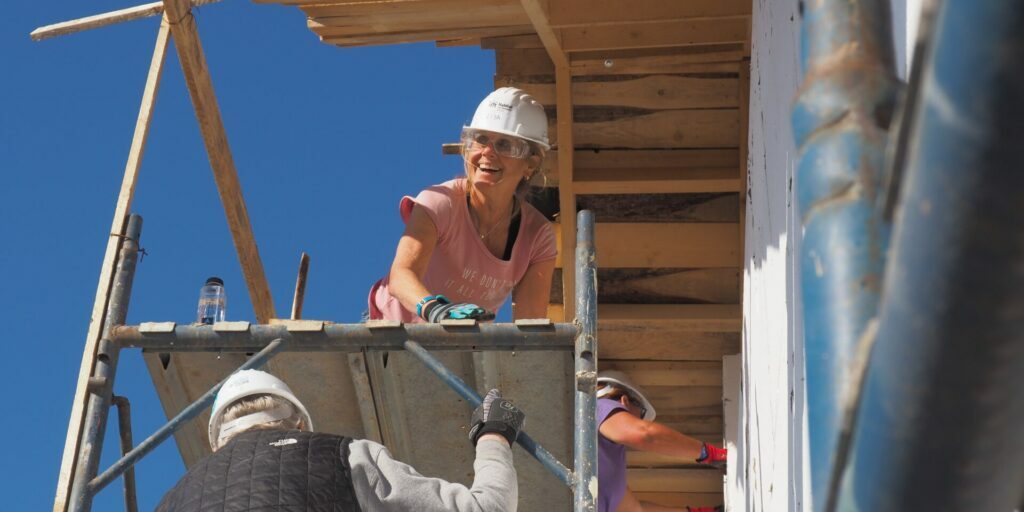What Are Construction Submittals, and Why Are They Important?

Construction submittals are an essential element in every construction project.
They ensure that contractors provide and install quality products, materials, and services and that the completed project fulfills the design intent and meets the owner’s expectations.
Construction submittals must be managed and processed efficiently to avoid costly delays and disruptions to a challenging delivery schedule.
Understand the vital role construction submittals play in the project lifecycle and why proactively managing your submittal process results in more successful projects by reading through this comprehensive guide.
Here’s what we cover:
- What are construction submittals?
- Why are construction submittals required?
- Why are submittals necessary?
- The importance of submittals for project managers.
- Understanding the construction submittal process.
- Are all submittals accepted?
- Tips for an effective submittal process
- Why automating the construction submittal process makes sense
- Improve your construction submittal process with Linarc
What are construction submittals?
Construction submittals are informative data sets that validate contractor compliance with the contract documents.
Submittals come in many forms, such as:
- Product data sheets,
- Installation instructions,
- Calculations,
- Shop drawings,
- Material test reports,
- Color samples,
- Material samples,
- Scaled models
- Mockups,
- Performance data,
- Material Safety Data Sheets (MSDS) and
- Certified documents
Contractors must submit materials such as these to the owner, architect, or engineer for review before construction can begin.
The owner, architect, and engineer rely on submittal information to ensure that the contractor plans to build the project according to the owner’s design and specifications.
Contractors rely on submittals to verify that their plans, products, materials, and processes match the contract’s requirements and meet the owner’s approval.
And contractors also rely on the approved submittals as reference points to guide their procurement requests and subsequent installation work throughout the project.
Why are construction submittals required?
Submittals help owners and design teams verify that the contractor’s proposed products, materials, and installation methods meet the specifications in the contract documents.
Products, construction materials, and installation methods must meet building codes, design tolerances, and quality, fit, and finish standards.
Submittals also help identify discrepancies between the project specification and the material used or provided.
Why are submittals necessary?
Construction submittals are essential for several reasons.
Quality
First, they provide quality assurance in the project delivery process.
Submittals ensure that contractors provide the materials and services specified in the contract and verify that the completed project will comply with the owner’s design and requirements for fit and finish.
Scheduling and availability
Second, the submittal process ensures that the project’s proposed products and materials are available and meet the project’s schedule.
Suppose contract-specified products and materials are out of stock or no longer in production. In that case, the submittal process allows the owner and design team to specify new requirements and amend the contract accordingly.
Budget
Third, submittals provide a means of cost control.
Cost control is especially relevant on projects where the owner has included a list of approved manufacturers or products. Contractors must source from these pre-approved providers, ensuring their costs align with the owner’s budget.
Documentation and maintenance
Finally, submittals are vital because they provide a living record of the products and materials that went into the project.
This documentation is necessary because maintenance and service professionals will rely on these documents to service the asset throughout its lifecycle.
The importance of submittals for project managers.
Submittals aren’t just important to the owner and design team.
Project managers need to pay close attention to the construction submittal process too.
Submittals are time-sensitive and require proactive management so they don’t cause delays in the project delivery schedule.
That means project managers must monitor and manage the submittal process for efficiency. Failing to do so can cause delays, disputes, and costly change orders.
By thoroughly reviewing all submittals before work begins and regularly monitoring progress during construction, project managers can rest assured they’re delivering a quality product on time and within budget.
Understanding the construction submittal process.
The submittal process begins in preconstruction when the contractor or subcontractor receives plans, specifications, and other contract-related documents from the owner or architect.
Contractors rely on those plans and specifications for their project estimating, planning, and budgeting. That’s because the plans and specifications determine the methods and materials the project requires.
Once the final bids are tallied and the owner contracts with the general contractor, the general contractor begins soliciting subcontractors and suppliers, evaluates their proposals, and assembles the project delivery team.
From here, the project delivery team begins collecting and creating the actual submittal packages they’ll submit for review.
Are all submittals accepted?
Not all submittals are accepted.
If the submitted information does not comply with the contract documents, the owner, architect, or the owner’s representative will reject the submittal.
The contractor must make corrections or revisions and resubmit depending on the reason for rejection.
Revisions
The design team may require changes to submittals before approving them for construction.
Project managers must document all revisions and their history and maintain only the most current submittal versions to avoid confusion and costly delays.
Deviations
Project managers must be aware of revised submittals that deviate from the original contract specification.
That’s because design, fit, or finish deviations can affect other project elements. And changes to installation methods will most certainly require special accommodations.
Tips for an effective submittal process
An effective submittal process can be vital to maintaining an efficient construction schedule.
Consider the following tips to ensure your submittal process is as efficient as possible.
- Create clear expectations for each step of the process.
- Provide submittal templates to ensure all contractors include all necessary information.
- Use a unified platform for all document sharing for easy access.
- Establish rules of communication between project stakeholders.
- Establish a uniform system for tracking and monitoring submittal progress.
- Document each revision for future reference.
Why automating the construction submittal process makes sense
When done manually, construction submittals are subject to lengthy delays, paperwork pileups, and the potential for costly errors.
Construction Project Management software, like Linarc, solves this problem.
Linarc automates the submittal process from start to finish.
Rather than rely on tedious manual processes, Linarc manages the process for you.
By automating the construction submittal process, busy project managers can attend to more important matters and let the system maintain a steady workflow.
Automated workflows ensure that all project stakeholders stay informed and up-to-date on their responsibilities.
The cloud-based platform also securely stores contracts, design documents, and submittals. That means the software protects you against costly errors and delays caused by outdated or misfiled information.
Finally, automation allows you to set up automated reminders and notifications so that no one misses an important deadline.
By automating the construction submittal process, you can help keep your projects on track and ensure that project success is measured not in terms of hours or days but in terms of money saved throughout the project.
Improve your construction submittal process with Linarc
The construction submittal process can be time-consuming, but it doesn’t have to be.
Linarc’s integrated project management system helps busy project managers keep their projects stay on track from start to finish while still meeting the highest industry standards in quality and safety.
Contact a Linarc customer success manager today for a free custom demonstration.
Connect – Build – Thrive with Linarc




